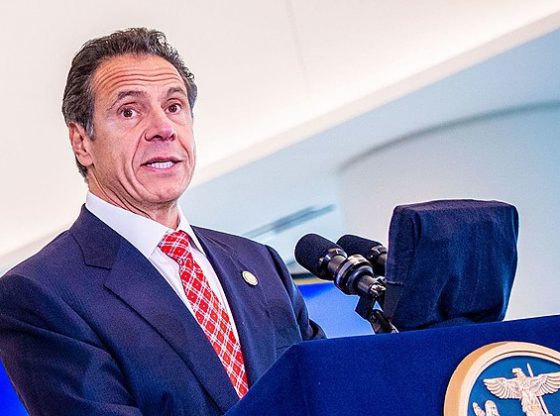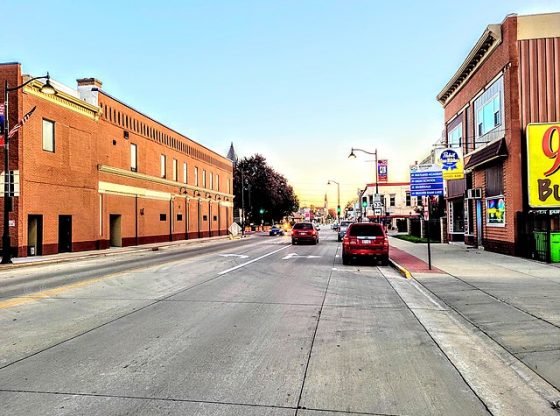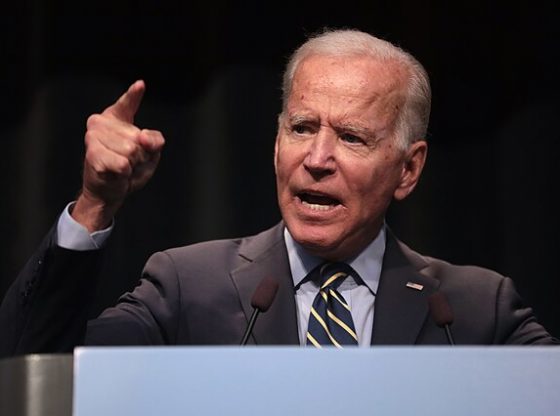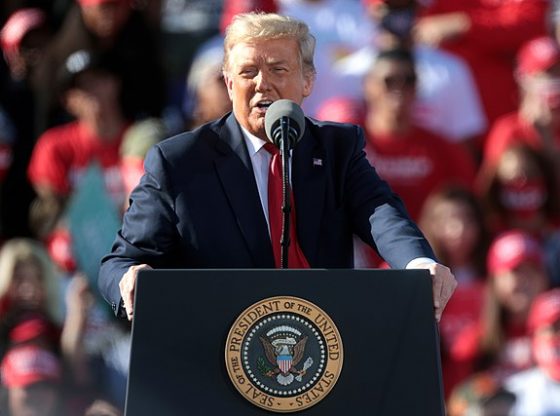The Biden administration has dropped hints that it could send taxpayer funds to another stalling high-speed rail project, this time in Texas, that has faced years of delays due to a lack of private investor interest, legal fights with landowners and an executive exodus.
President Joe Biden met with Japanese Prime Minister Fumio Kishida on Tuesday, where they discussed possibly renewing work through new funding on the failed Texas Central high-speed rail project, which would connect Houston to Dallas, using Japanese bullet train technology, sources told Reuters. The project has been largely stalled since 2022, despite work beginning nearly a decade ago, after top executives resigned from the company as private funds ran out, with not a single track having been laid so far, according to the Texas Tribune.
The Biden administration previously granted $500,000 to Amtrak to further study the viability of the Houston-to-Dallas train. Following Biden’s meeting with Kishida, the White House released a fact sheet noting that the Texas project could be eligible for funding opportunities as long as it met certain undisclosed requirements.
“The U.S. Department of Transportation and Japan’s Ministry of Land, Infrastructure, Transport and Tourism welcomed Amtrak’s leadership of the Texas Central High-Speed Rail Project, utilizing Shinkansen technologies, which was recently selected for the Federal Railroad Administration’s (FRA) Corridor Identification and Development grant program,” the White House said in the fact sheet. “The successful completion of development efforts and other requirements would position the project for potential future funding and financing opportunities.”
The project has endured criticism from opponents who argue that it provides little real benefit to travelers who can currently already drive or fly between the two cities and provides huge downsides for landowners along the train path and to taxpayers who could have to fund a project that may require even more funding in the future with no guarantee that it will be completed, experts told the Daily Caller News Foundation.
“I just don’t see the need for it,” Marc Joffe, a policy analyst at the Cato Institute, told the DCNF. “I don’t hear massive complaints about people not being able to get from Houston to Dallas or vice versa. I’m really not sure what the case is for allocating public money to this other than trying to keep up with Japan’s, China’s and France’s of the world by saying, ‘Hey, we’ve got high-speed rail.’”
The project, which aims to connect Dallas and Houston, was initially supposed to be entirely privately funded, and its former CEO Carlos Aguilar indicated in 2021 that Texas Central would not ask for a federal grant or any tax money but would accept a long-term loan from the government, according to WFAA.
A key headwind that has stalled construction is acquiring the rights to build on the land along the proposed track, with the Texas Supreme Court finally granting Texas Central broad eminent domain powers in 2022 after years of fierce opposition, according to The Dallas Morning News. The green light from the Texas Supreme Court could even allow Texas Central to cut right through land given to former slaves following their emancipation, including Morney-Berry Farm, which has been farmed by the same family for more than 100 years, according to D Magazine.
“The real big downside of it is that to minimize the distance and to have the line go as straight as possible — because if you have too many curves, or too sharp curves in a high-speed rail line, you can’t achieve the maximum speeds of high-speed rail — so to get those benefits, the idea was to come through a lot of ranch land, and then, of course, that’s bad for people who have had farms and ranches in their family for a long time and for many generations, and they want to continue to have their businesses there,” Joffe told the DCNF.
Joffe argues that a much better way to go about the project would be to run the rail along the side of I-45 that connects Dallas and Houston instead of cutting through and dividing people’s land for the sake of speed and travel distance.
However, proponents of high-speed rail projects argue Texas could use alternative means of transportation.
“Texans need more options for moving around our vast state,” the Houston Chronicle editorial board wrote. “This board has supported local mass transit projects and investments in multimodal transportation. Who wouldn’t want to avoid the interminable, eyesore drive north to Dallas on I-45 in favor of a more scenic, faster train ride?”
The project burned through cash during its quest for land acquisition, failing to garner enough private interest and eventually going delinquent on its 2021 property taxes, according to the Reason Foundation. Cost estimates have grown from an initial $10 billion to more than $30 billion as of April 2020, according to the Reason Foundation.
Some critics point to Texas Central’s inability to successfully operate the project as a reason it should not get funding, with previous executives having little to no experience in managing a rail company.
“Because the company is cloaked in secrecy, no one knows if they actually have a definitive, finalized construction plan,” John Sitilides, federal affairs advisor to ReRoute the Route, a group that is opposed to the use of taxpayer funds on the project and its current expected path, told the DCNF. “We presume that a semblance of a plan exists, but in four years they’ve never submitted the requisite federal construction permit application or any detailed project financing information to the Surface Transportation Board, which declared federal jurisdiction over the project in July of 2020.”
The last press release from Texas Central was released in August 2023, announcing that the company was in talks with Amtrak to advance planning and analysis work on the Texas rail project. The proposed route would span 240 miles with an estimated travel time of less than 90 minutes.
“Looking all around the country, one of the most interesting and promising projects to come next is that Texas Central vision,” @SecretaryPete on a bullet train between Dallas and Houston.
Some of the interview here w/@gromerjeffers @dallasnews @NBCDFW. pic.twitter.com/uQn7ab1P4m
— Phil Prazan (@PhilPrazan) April 7, 2024
Biden had been particularly supportive of rail projects during his tenure as president, designating $66 billion for Amtrak in 2021 for maintenance and modernization of existing lines and expansion beyond the northeast and mid-Atlantic. Amtrak has never made a profit and is estimated to continue to lose around $1 billion per year.
“Many high-speed rail proponents will talk up supposed benefits such as reduced carbon emissions, electrified transportation and the like, without explaining that energy-dense hydrocarbons are required to provide the massive additional baseload to power a 240-mile-long system, as well as to manufacture the steel and cement essential for rail equipment and rolling stock,” Sitilides told the DNCF. “Texas is increasingly dependent on wind turbines and has suffered from blackouts and brownouts in recent years under current electricity generation levels. The Texas agency that manages power flow and works to maintain energy system reliability has no plans to mandate that additional capacity be created for a high-speed rail system, whose electricity demand could overwhelm the state’s already limited energy system.”
The Biden administration has also allocated over $3 billion to support California’s high-speed rail project, which was first approved in 2008 and has since failed to make substantial progress. The project aims to connect the California cities of Merced, Fresno and Bakersfield and has had its expected costs balloon to between $88 billion and $128 billion to be fully completed.
“As someone who moved to Texas from California 12 years ago, I would expect that the Texas high-speed train has a higher likelihood of eventually being built should they acquire the necessary funding and access the land that they need to finish the project, unlike the California High-Speed Rail Project, which is entirely a project of the state of California and thus doomed to endless overruns and delays,” Chuck Devore, former California State Assemblymember and current chief national initiatives officer at the Texas Public Policy Foundation, told the DCNF.
The Biden administration has also announced $3 billion in funding for another high-speed rail project connecting Southern California with Las Vegas, Nevada, just one-fourth of the estimated $12 billion needed to complete the project. The project is estimated to be completed by 2027, and tickets would need to cost around $400 to be profitable, far more than the cost to drive.
“Were they to take money from the Biden administration, Texas lawmakers would immediately become very skeptical of the project,” DeVore told the DCNF. “What was promoted as a project that would use entirely private money would transform into nothing more or less than a subsidiary of Biden’s Green New Deal and therefore would draw opposition from the majority of the Texas Legislature.”
Other Biden administration-funded initiatives have also been subject to union requirements that could slow down progress and raise costs, such as Biden’s electric vehicle charger rollout, which requires certification or union recognition for electricians working on installing the chargers. The California High-Speed Rail Authority also recently announced that it had created 13,000 union construction jobs.
“The proposed project is a $40 billion boondoggle and would rip through the middle of 1,800 farms, ranches, businesses and private properties, including an important African American cultural heritage site,” Jennifer Stevens, spokeswoman at ReRoute the Route, told the DCNF. “There are no airport connections with the proposed route. Ridership and revenue projections have plummeted post-COVID. Post-Hurricane Harvey floodplain concerns have not been considered. Secretary Buttigieg is out of touch with the significant problems with the proposed project.”
Texas Central and the White House did not respond to a request to comment from the DCNF.
















